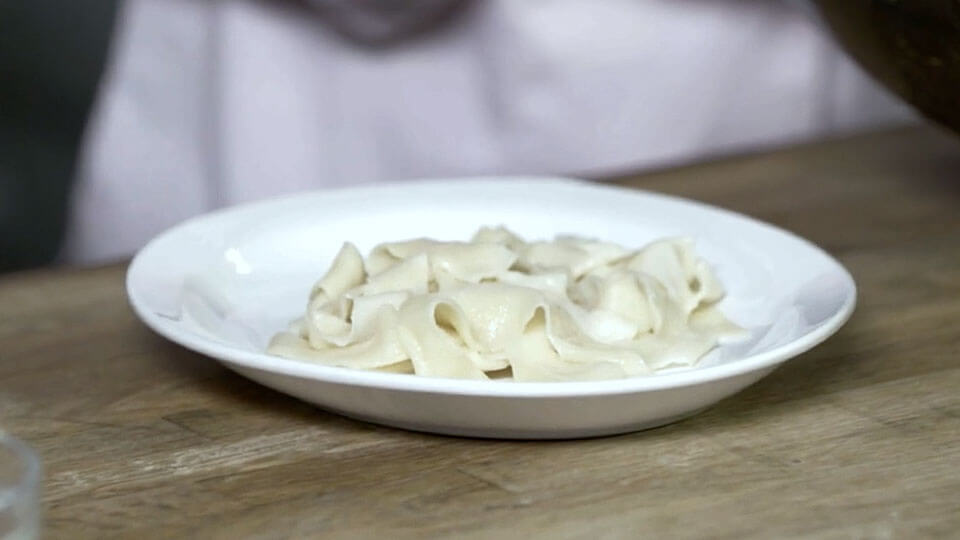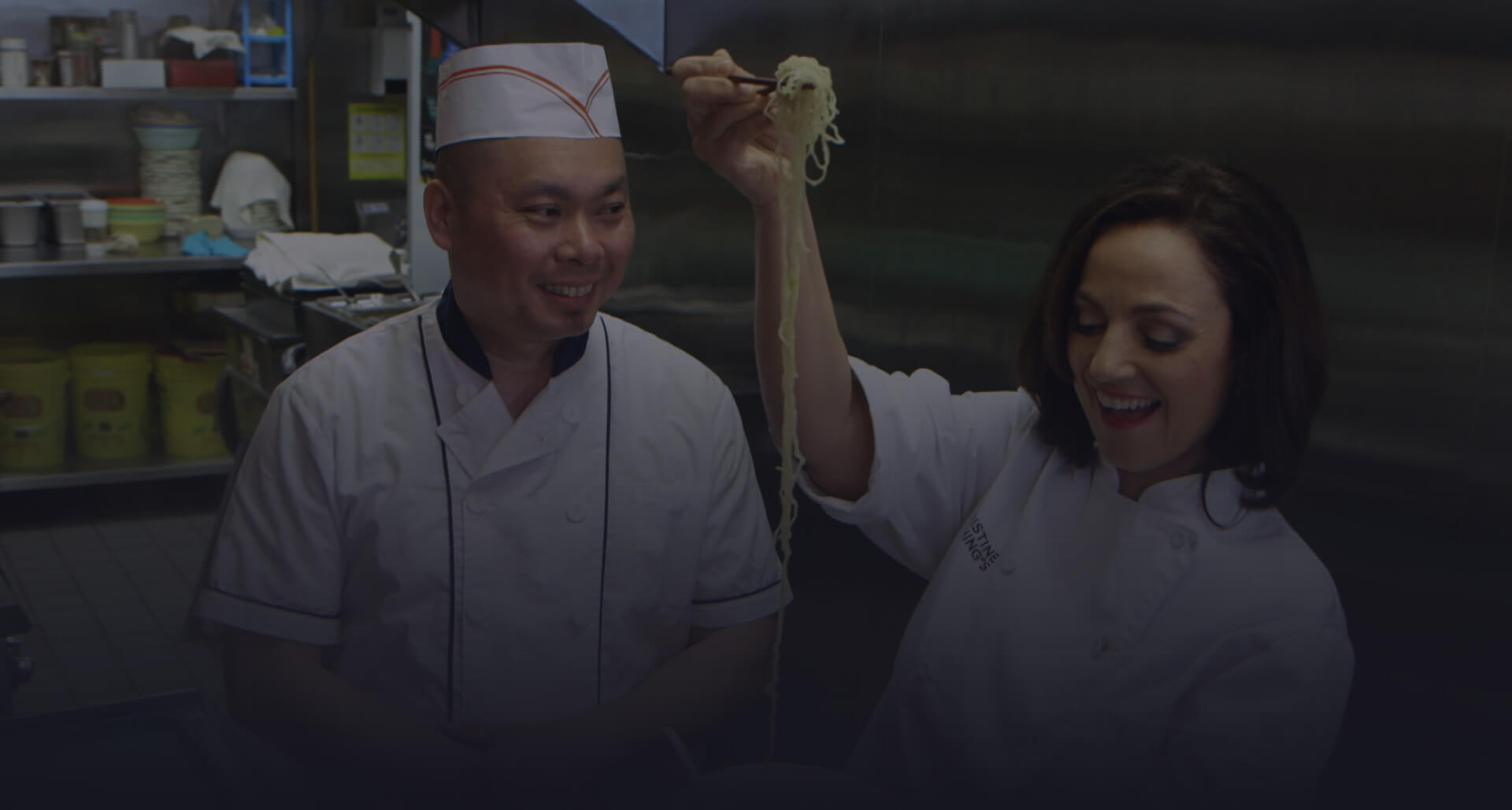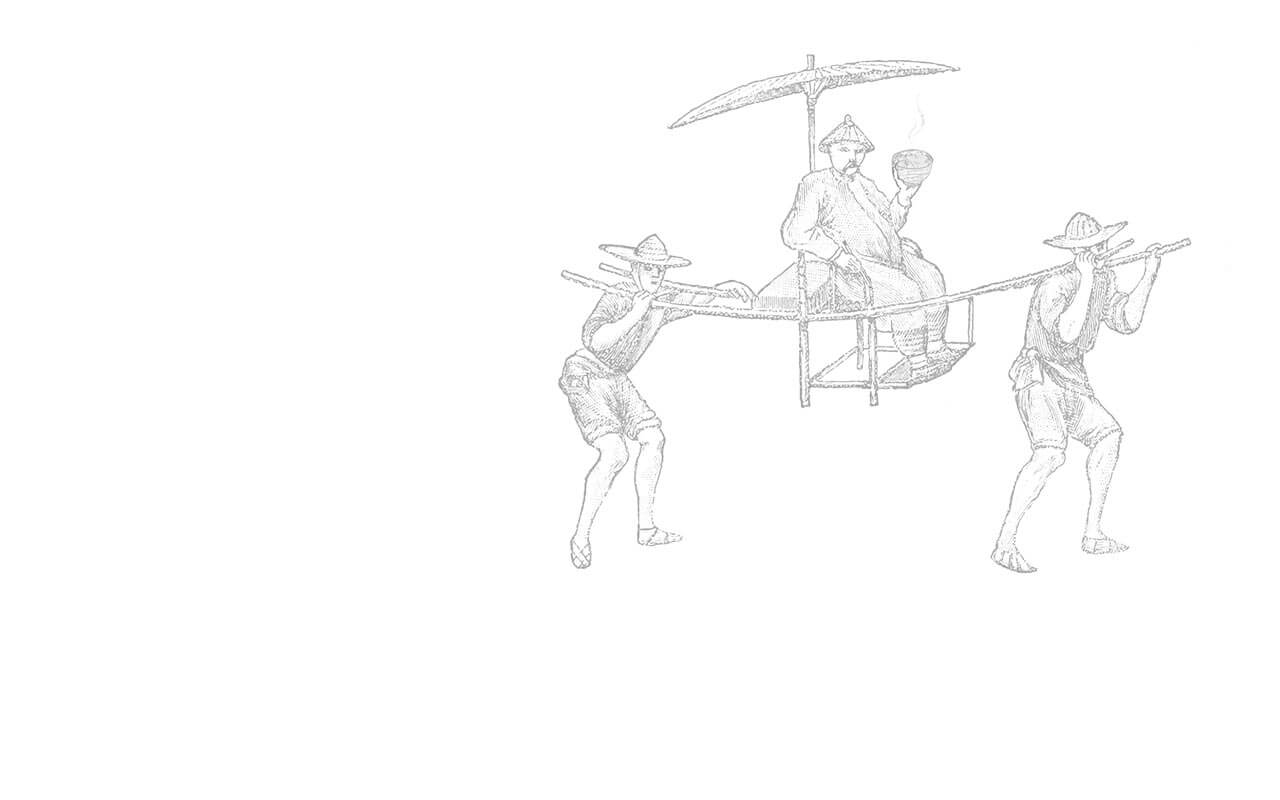
Explore the evolution of the Noodle – the staple food in many parts of the world for at least 2,000 years
The 4,000-year-old Bowl of Noodles

A 4,000-year-old bowl of millet-based noodles found at an archaeological site in northwestern China in 2005 is the earliest example ever found.
There is debate over whether the modern version was first invented by the Chinese, Italians, or Arabs.


Flour, Water, Noodles and Cakes
In China, noodles were originally called cakes, which referred to any food made from flour and water.
The earliest written record of noodles appears in a 3rd century Chinese dictionary written during China's East Han Dynasty sometime between A.D. 25 and 220. It describes a bread-like dough made from flour and water, which is then torn into pieces and added to soup called mian pian. It is still eaten in China today.
Noodles for Every Season
Noodles were first cut into strips during the Tang Dynasty, when soup cakes and cold noodles were enjoyed in cold and warm weather respectively.
Unleavened dough made of wheat flour was rolled out into thin sheets, folded then cut into strips of the desired width. Henan noodles, one of China’s most popular styles, also originated in the Tang Dynasty. The dough is worked aggressively by being pulled straight, with no twisting, folding or waving. It can also be regularly slammed on a table to ensure even stretching and uniform thickness.
Mian and Fen Became Formal Names
In earlier dynasties noodles were mostly called soup cake, but during the Song Dynasty wheat-based noodles officially became known as mian. Rice flour, mung bean starch and other starch-based noodles became known as fen or fun.
Noodle shops became very popular in the cities and were open all night.
Learn how to say:
Noodles Hung Out to Dry
Dried, or hanging, noodles, which could be preserved for a long time, were introduced during the Yuan Dynasty.
Wheat flour dough was kneaded to the width of a chopstick then pulled, twisted and folded in on itself and stretched into noodles several feet in length. They were then hung on racks to dry in the sun. They can be cooked plain or caramelized by extensive steaming. Known as misua or mian xian (麵線), these noodles are eaten during important festivities.
Stretch it Out
Hand-pulled noodles were developed during the Ming Dynasty. They are made by twisting, stretching and folding dough into strands.
The length and thickness of the strands depends on the number of times the dough is folded. Classic “five-spice” and “eight treasure” noodles were created during this time.
Getting Through the Off-Season
In the late Qing Dynasty fishermen began selling Ta-a, long, wheat-based noodles, from baskets hung from a pole carried over their shoulders to earn money during typhoon season when it was too dangerous to fish.
E-Fu, or Yi Mein, are flat wheat noodles which appeared in Qianlong period of this dynasty (1736 - 1795). When consumed on birthdays, they are generally referred to as longevity noodles, or sau mein.

Chef Zhang’s Hand-Rolled Noodles
Recipe by: Jen Lin-Liu, author of On the Noodle Road and the food blog Feeding a Family of Four
Serves 4
4 cups all-purpose flour, 2 cups water
View RecipeAnything Goes
Noodles’ popularity continues to grow and expand.
Noodles and pastas are now made from wheat flour, rice flour, mung bean starch and many other ingredients. Egg, lye and cereal grains may also be added to wheat noodles to give different color or flavor. Small quantities of egg whites, arrowroot or tapioca starch are sometimes added to flour mixture to change texture and tenderness. The form and content of today’s noodles are limited only by the imaginations of the chefs who create them.

Noodles are not only amusing, but delicious.
Chef Zhang’s Hand-Rolled Noodles
Recipe by: Jen Lin-Liu, author of On the Noodle Road and the food blog Feeding a Family of Four
Serves 4
4 cups all-purpose flour, 2 cups water
Make the dough:
Heap flour on a large, flat surface and make a well in the center.
Pour 1 cup of water into the well and work it into the flour, mixing with your hands. Slowly add more water, about ¼ cup at a time, mixing thoroughly until all the flour has been incorporated and the dough is soft, pliable, and smooth.
Transfer the dough to a clean surface and knead by hand or with a stand mixer for 3 to 5 minutes, then cover the dough with a damp cloth or wrap it in plastic and let it sit for at least 30 minutes.
Roll out the dough:
Make sure the rolling surface is clean and dry, then dust it with flour. Break off a quarter of the dough to work with, leaving the rest under the damp cloth or wrapped in plastic. Knead the dough briefly, then flatten and stretch it with your hands into a rectangle. Sprinkle the dough with flour and flatten the dough with a rolling pin, forming a long rectangle about ¼ inch thick and about a third the width of the pin.
Starting with the end closest to you, flatten a small section of the dough, rolling the pin back and forth in a rapid and forceful motion. Pause frequently to sprinkle the rolling surface, the dough, and your pin with flour. Once you’ve flattened the first section, liberally flour the surface of the dough and roll it onto the pin, then move on to the next section, pushing down on the pin to make the layers thinner and wider (though not wider than the width of the pin). Unwind the dough occasionally and sprinkle it with additional flour to make sure the layers of dough don’t stick together. If the dough gets too difficult to work with, cut it in half crosswise and work one half at a time. Once you’ve flattened all the dough, unfurl it and check that it’s uniformly thin (but not paper-thin), flattening any thicker sections with the pin. The dough should be no more than 2 millimeters thick.
Wrap the dough once more around the pin, then, holding the pin above the board, unroll the dough so that it folds over itself in S-shaped layers about 3 inches wide. With a sharp knife, cut the dough crosswise. For standard Chinese noodles, cut the dough into ⅛-inch-wide strands. Shake the noodles lightly with your fingers to separate the strands, then set them aside on a surface or plate sprinkled with flour while you roll out the rest of the dough, a quarter at a time.
Cook the noodles:
Bring a large pot of water to a boil. Drop in the noodles. Boil for 4 to 5 minutes.
Remove the noodles from heat and drain. Chinese noodles are often bathed quickly in cold water to stop the cooking process.
Toss the noodles with a sauce of your own choosing. Serve immediately.






